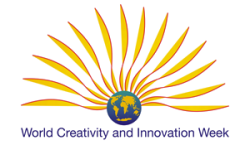Another Certificate in Creativity Studies. See what’s being taught at Drexel.
Drexel University‘s Certificate in Creativity Studies is targeted to individuals who want to add creative thinking and problem solving to their professional competencies. It provides knowledge of the major creativity theories as a basis from which students can grow personally and enhance their workplace experience. They are also equipped to assess creative strengths. Their student group, the Applied Creativity Graduate Student Association (ACGSA) offers opportunities to promote creativity within and outside the university.
The program began in 2009. Goodwin College, the program’s home, is an on-line institution. Students can meet face-to-face or not. If yes, then they must meet on Saturdays. Or maybe this is wrong. I found their website confusing. Certificates are available at both the undergraduate and graduate levels. What’s missing from their outline is mention of creativity styles - how these differ among people and cultures and how best to encourage people with different approaches to creativity. See blog posts Why do People Create? and Do You have to be Creative to do Creative Things?
Here’s their course work for this 18-hour graduate certificate (annotations in italics).
Foundations in Creativity
Provides a foundation in creativity including leading creativity theorists and their ideas (Robert Sternberg, Paul Torrance, Teresa Amabile, Mihalyi Csikszentmihalyi, J.P. Guilford, and Howard Gardner). Questions investigated include who is creative and why? What does it mean to be creative? Students complete and score a creativity assessment. (These are good people, researchers to reference if you want more info on creativity. Dan Pink among other authors source their work.)
Tools & Techniques to Enhance Creativity
Provides opportunities to enhance creative capacities and strengths. Through study and experiential learning, students work toward self-mastery creative techniques, tools, and strategies. Moreover, through a field-work experience, students learn to teach and motivate others, individuals or groups, to use these techniques in real life circumstances for their benefit.
Creativity in the Workplace
Applied creativity—how creative ideas happen, how they become innovations, and how students can apply a set of principles for infusing creativity into every aspect of an organization. Examples from a wide range of industries and other organizations demonstrate how to build systemic creativity in individuals, in teams, and at the leadership level.
Creativity and Change Leadership
This course explores the relationship between change, leadership, and creativity, and how these three concepts mutually support one another. Distinction is made between a leader who is effective at introducing change, but who is not creative. (I have a problem with this. All people can do creative things and use creative problem solving approaches to get new ideas and make new decisions. Michael Kirton’s work on evolutionary and revolutionary creativity styles opened the door in the mid 70′s to shift our thinking away from “how creative are you?” to “how are you creative?” Is Drexel using the old paradigm?)
Creative Leadership for Professionals
Presents leadership as a collaborative focus for transforming change. Topics include the leadership crisis, differences between leadership and management, how leaders create and change culture, and ways in which leaders build creative, enduring organizations. In addition, the course is designed to help students develop their own leadership potential.
Researching/Assessing Creativity
This course acquaints students with creativity research and applications. The goal is to help students employ creative problem solving to successfully complete their M.S. program in the context of other responsibilities and the program’s standards and requirements. Using creativity as a vehicle, students will study various research paradigms.
Global Perspectives on Creativity
This course explores theories, research, assessment, and programs for the development of creativity in a wide variety of countries around the world (Sternberg’s introduction to the text). Motives for the lack of global creativity research are suggested. (Lack of global creativity research? There’s research happening in many places around the world.)
Here’s another example of a graduate program teaching creativity. How does this one relate, say, to the programs being taught at other institutions of higher learning? Is there a common thread of foundational principles found throughout?
Add to: Facebook | Digg | Del.icio.us | Stumbleupon | Reddit | Blinklist | Twitter | Technorati | Yahoo Buzz | Newsvine


Follow…